
Charity Hospital was once considered the safety net of New Orleans, Louisiana. It was a place where anyone could go and receive the best healthcare available. The hospital was established in 1736, by a French shipbuilder, whose dying wish was to fund a hospital for the poor. The first hospital building, a small cottage in the French Quarter, opened a year after New Orleans was founded. Charity Hospital quickly outgrew that facility and a handful of temporary hospitals sprung up around New Orleans. The administration was taken over by the Sisters of Charity, a group of Catholic nurses who would run the hospitals along with the Medical College of the University of Louisiana. By the 20th Century, New Orleans was rapidly growing, and indigent care again exceeded Charity’s capacity.
In 1939, the Governor commissioned a new Art Deco-style hospital tower on Tulane Avenue in the lower Mid-City neighborhood. Charity Hospital became the second-largest hospital in the country with 2,680 beds and encompassing a million square feet. It was known as a teaching hospital, a place where students from LSU and Tulane University could receive medical training. Designed by the same architects that built the Louisiana State Capitol, the building’s cornerstone lists the Public Works Administration as the building’s authority. Charity Hospital served over 100,000 indigent citizens each year before it closed and was the longest continually running hospital in the country until August 2005.
The levees broke on August 29, 2005, as Hurricane Katrina made landfall. Rising floodwaters caused Charity Hospital to lose power. The electrical and mechanical equipment that powered the building were underwater in the basement. The basement morgue flooded as well, sending bodies floating down the basement hallways. Doctors instructed the staff to pull the bodies out of the flooded basement and stack them in the stairwells. The floodwater trapped everyone inside for days with no power, no air conditioning, limited supplies, and food. Patients were hand-pumped oxygen by anyone willing to help, eventually being paddled down the flooded streets by staff to a nearby parking deck. After being carried up to seven flights of stairs, they were taken by helicopter to another nearby hospital for treatment. Several patients died in the parking deck, waiting to be rescued. Finally, a week after Hurricane Katrina devastated New Orleans; the last patient was evacuated.
After the severe flooding, questions loomed regarding Charity’s future. The hospital had never closed, and many thought it would instantly reopen. Three weeks after Hurricane Katrina, the Army Corps, along with FEMA volunteers, had Charity Hospital back operational and ready to open. FEMA had generators set to be delivered to restore power however LSU representatives along with then-Governor Kathleen Blanco blocked the delivery multiple times and ordered the power turned off at the grid. Governor Blanco stated Charity Hospital would never reopen as a functioning hospital again. Hospital police forced out volunteers and staff, locking the doors without warning.
Over the next ten years, a bitter battle ensued between FEMA and LSU representatives about the amount of damage inside Charity. The disaster damage had to exceed half the cost of rebuilding to qualify for FEMA compensation. LSU wanted out of the impoverished healthcare business, hoping the closure of Charity would allow them to move on. LSU had been working to move towards a more privatized health care operation and wanted a new, state of the art facility outside of the downtown area. The closing of Charity allowed LSU to seek the government funds needed to help build a billion-dollar medical complex outside of the downtown area.
University Medical Center, completed in 2015, cost a total of $1.2 billion. A replacement for Charity that seemed almost too little, too late. The state-of-the-art facility features far fewer psychiatric beds and does not have any birthing units. The 70-acre site in lower Mid-City is split off from downtown by the interstate, making it difficult to reach by the impoverished population. Many of the historic homes that outlasted Hurricane Katrina were destroyed or moved to less desirable areas to make way for University Medical Center. The City of New Orleans used the power of eminent domain to take over the land for the new hospital while continuing to pay over $3 million a year to secure the 70-year-old Charity Hospital as it sits dormant. Over the years, ideas for reuse such as a City Hall or medical student apartments were suggested but quickly put to rest. Charity Hospital remains abandoned and locked down under constant police patrol.




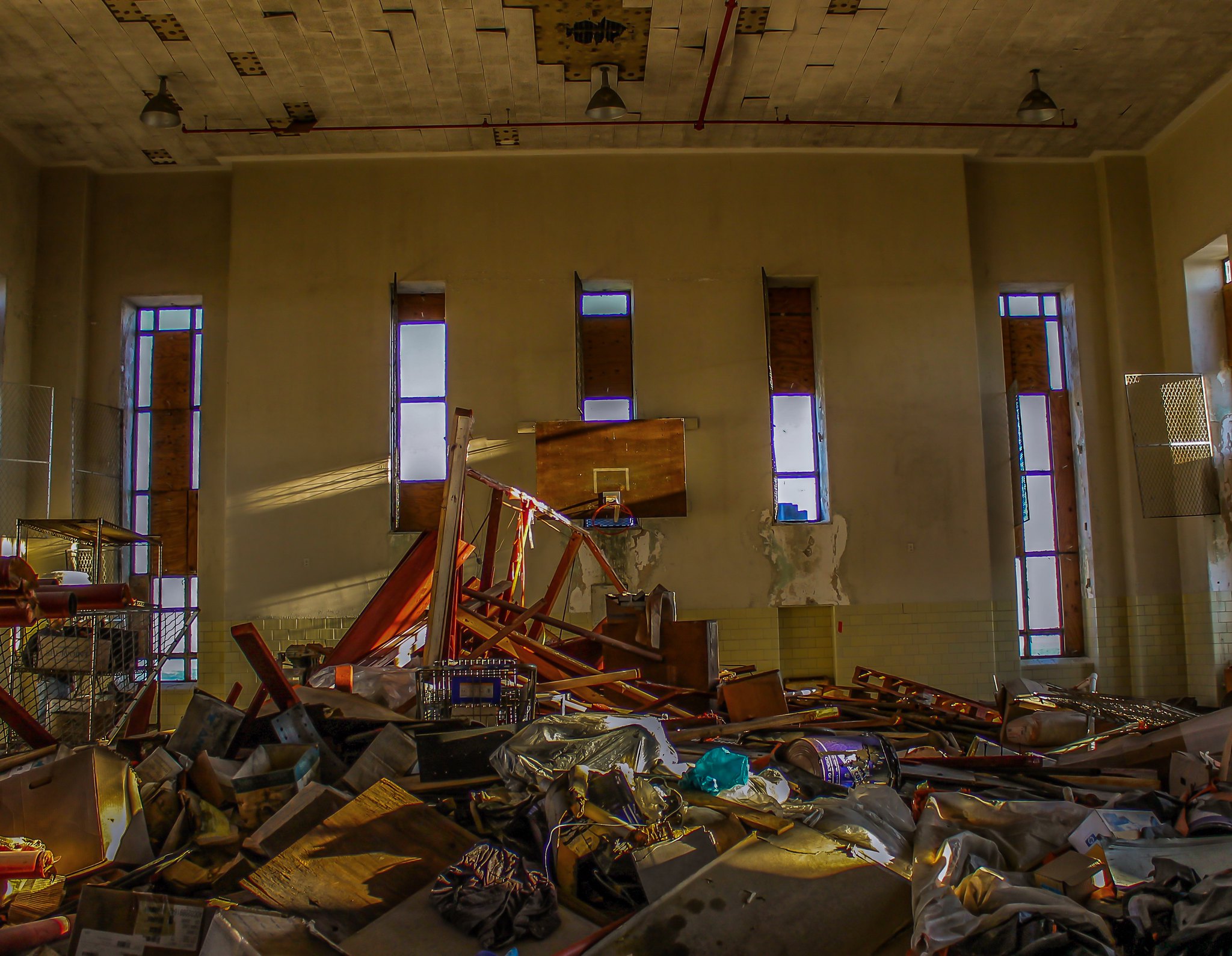
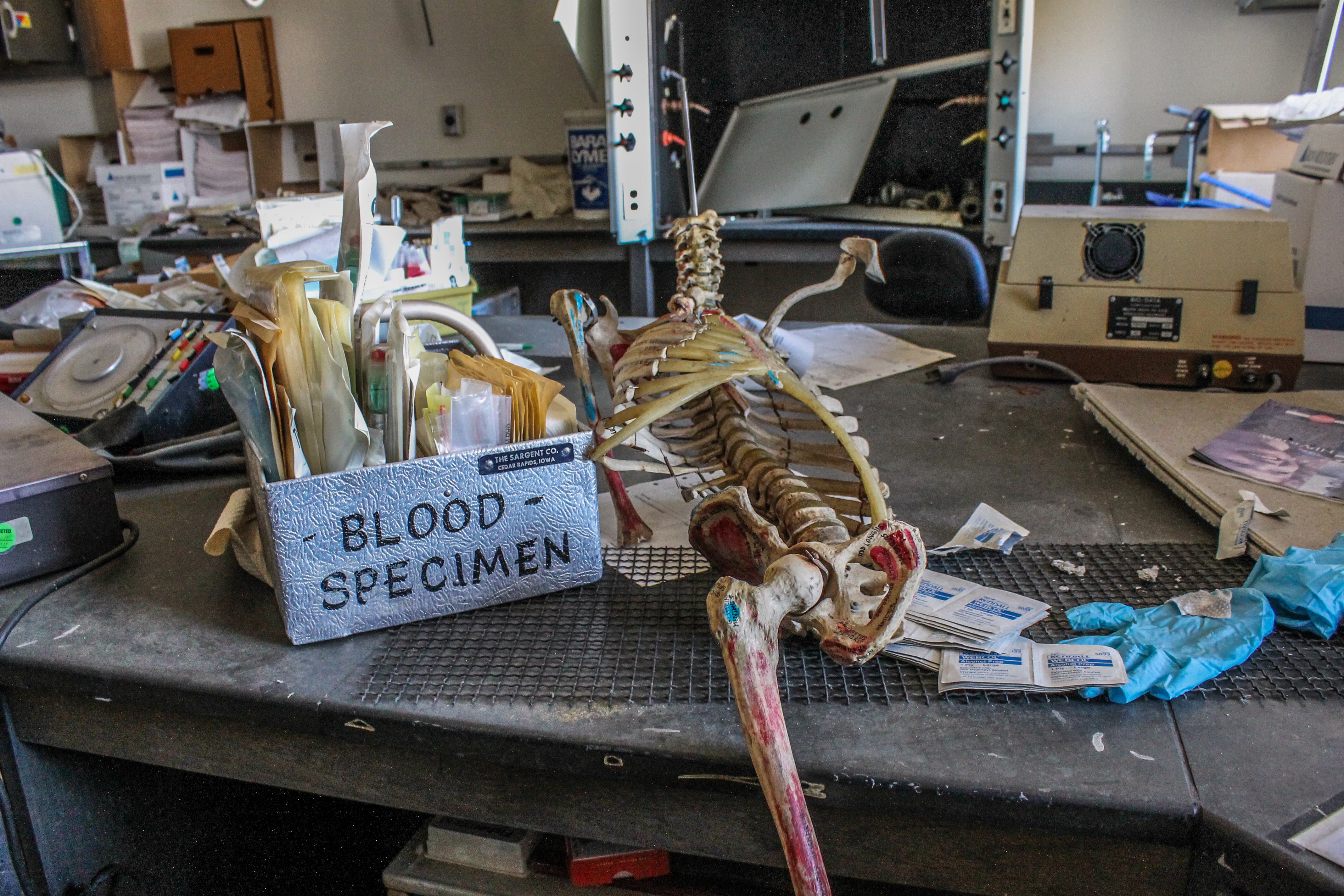

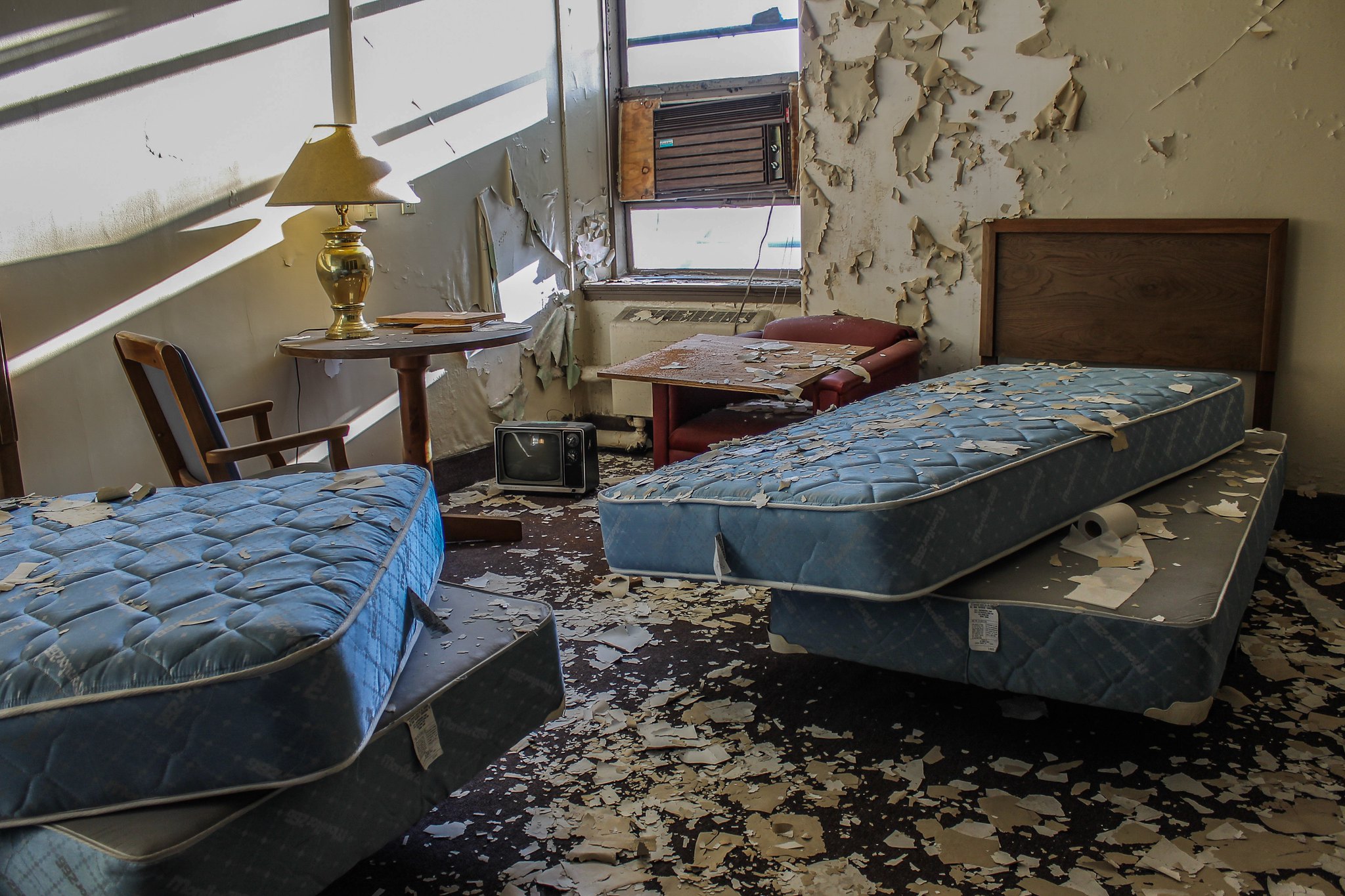
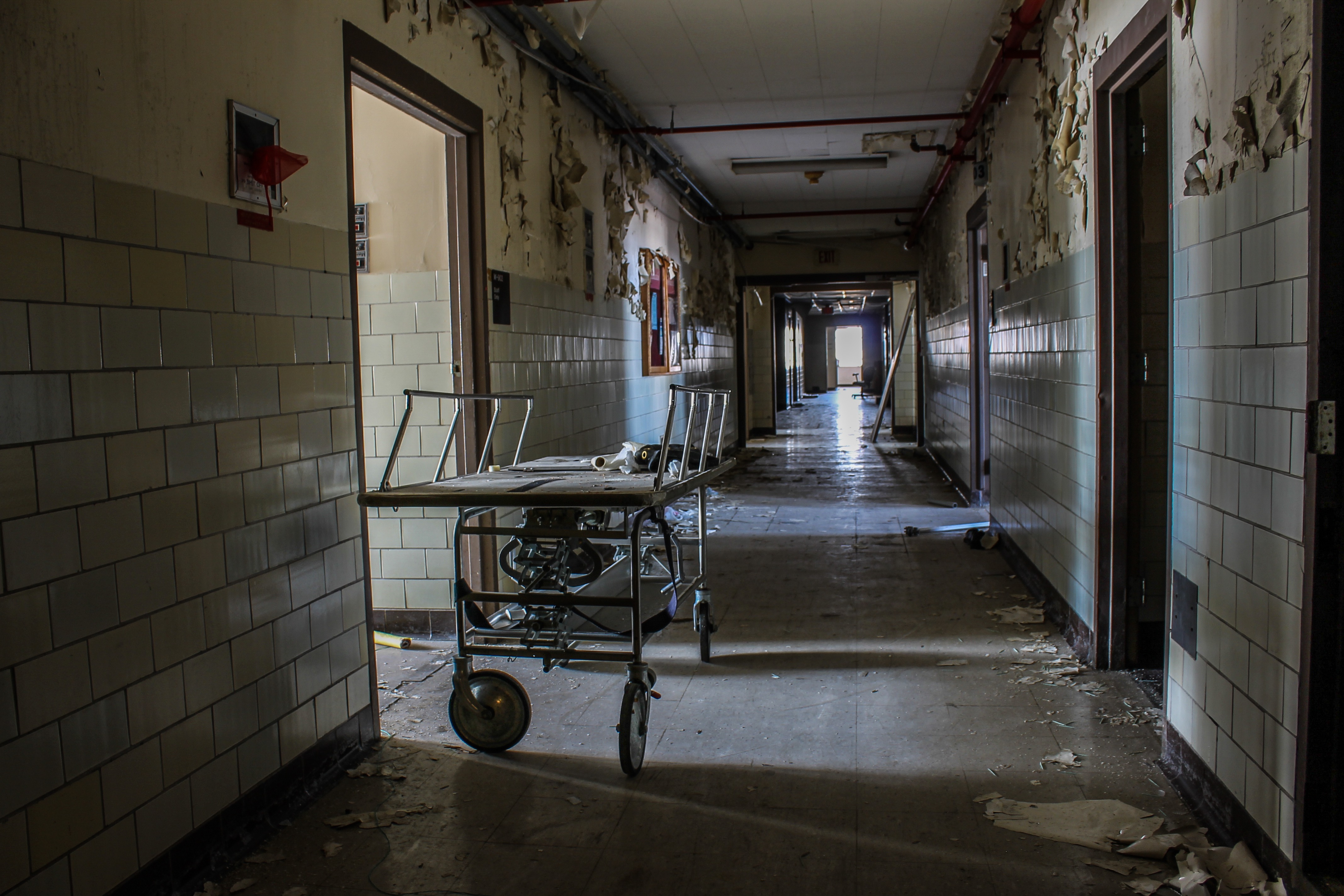

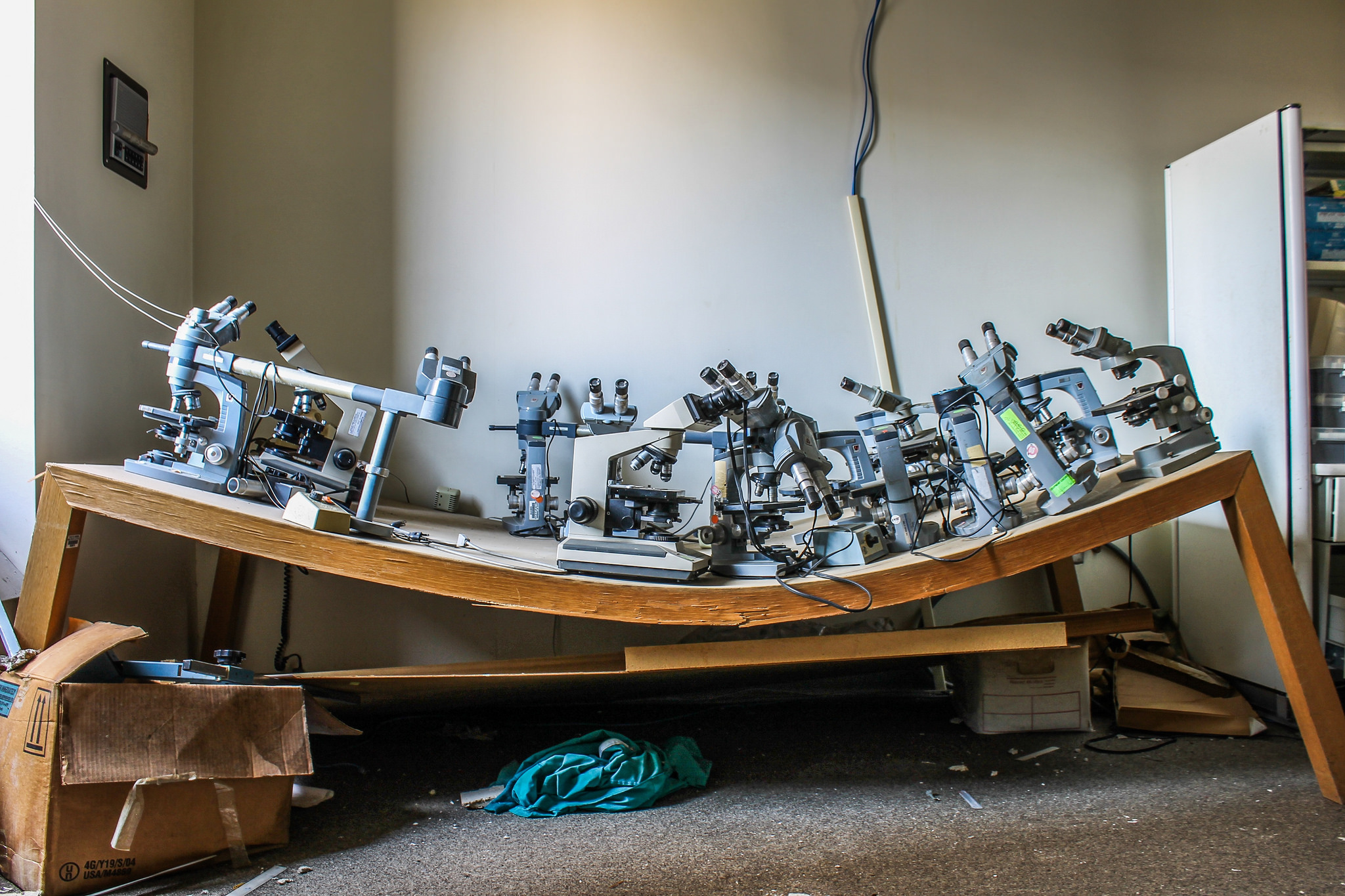
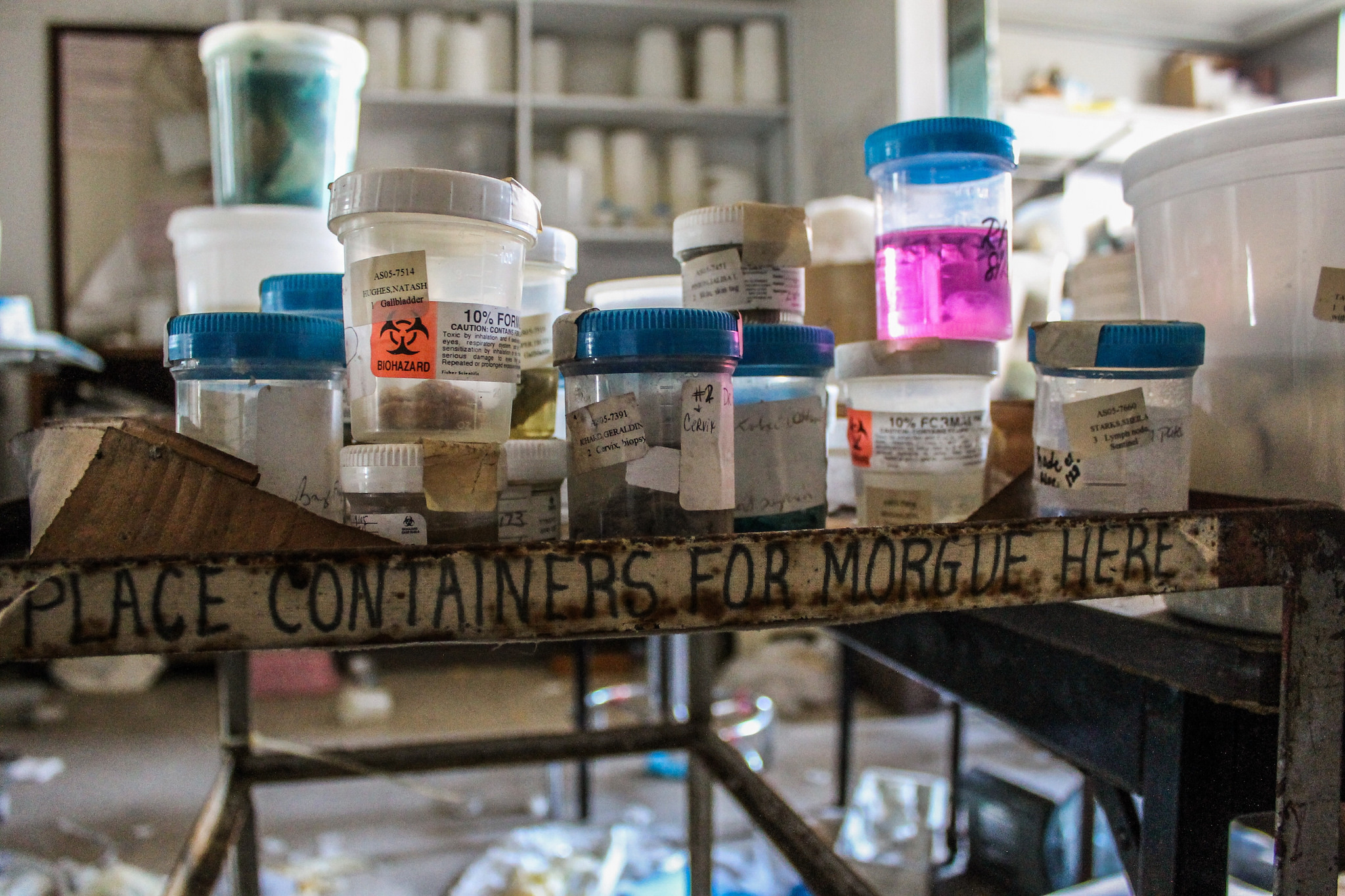

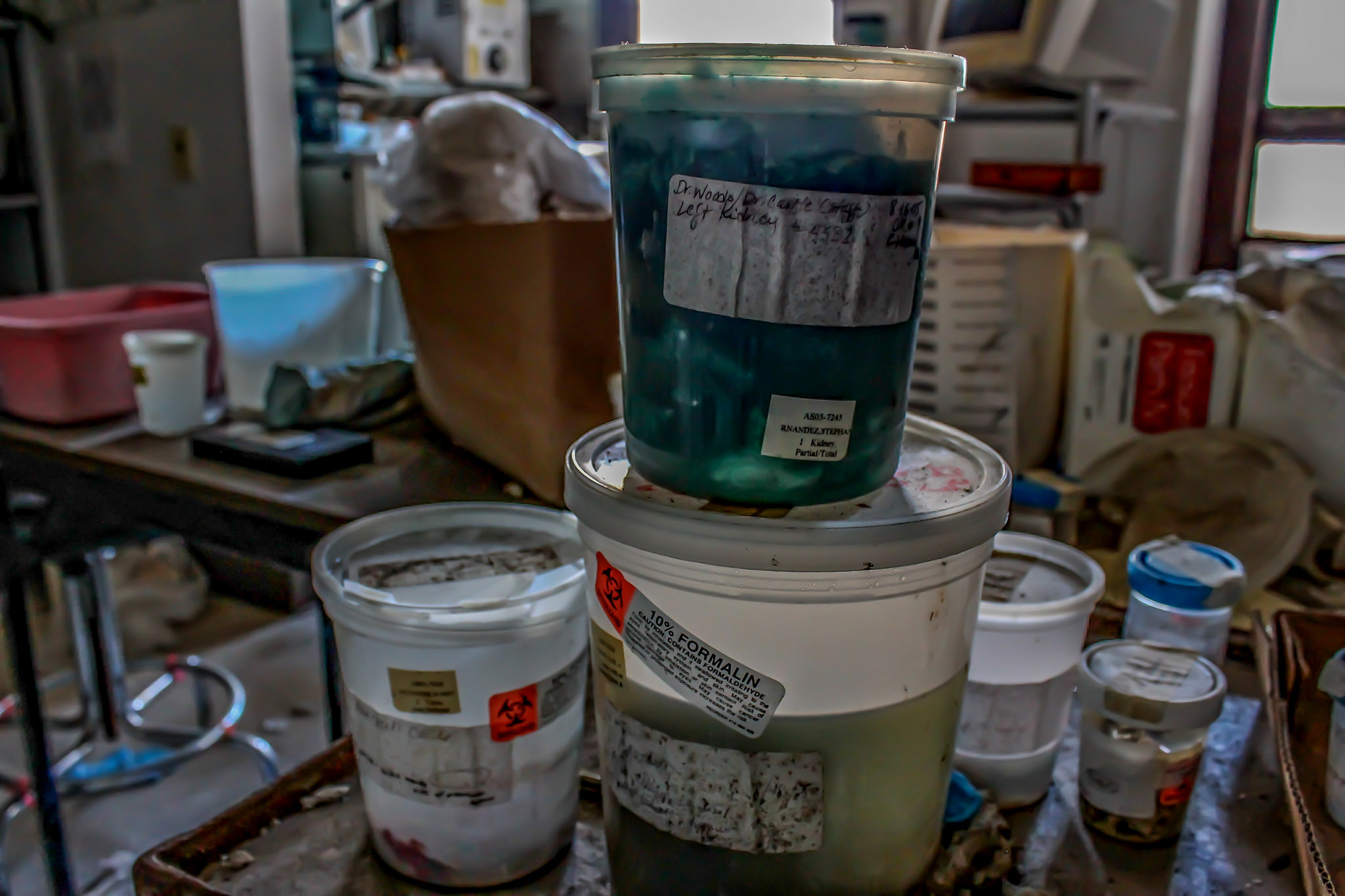

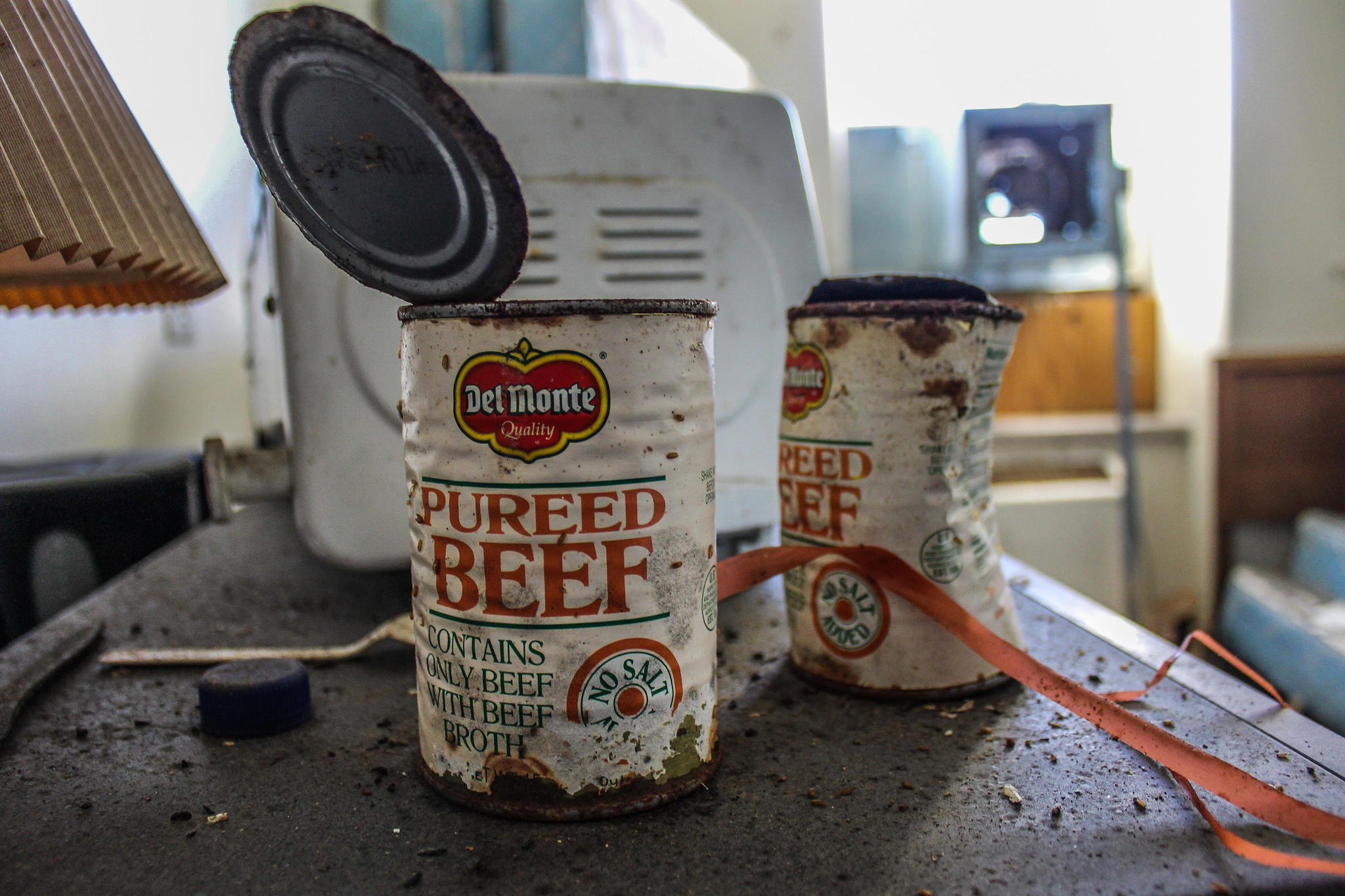


Thank you for reading. I appreciate the support. Please share the blog with your friends.
You can find me on Facebook, Instagram, and TikTok. Get a more detailed look from inside the walls of Charity Hospital in my book, Abandoned New Orleans. Click here for a complete list of my book series.


The abandonment of Charity Hospital was and is a crime, as was the destruction of an entire neighbourhood to service the corporate demands of LSU.
LikeLiked by 3 people
Just think – for a second – about trying to modernize a building from the early 20th century for modern needs such as computer wiring and wifi, not to mention patient privacy. The building served its purpose. It was time to modernize. It just wasn’t charming anymore.
LikeLiked by 2 people
Buildings are modernized and revitalized all the time. It’s not in the realm of impossible.
LikeLiked by 5 people
You obviously don’t understand the profound history of this building and what it meant to New Orleanians. This was a place of charity and hope, people are dying everyday in LA because of the greed in the medical industry. You felt very human when you came to charity hospital because the FIRST thing that was always asked was “what’s wrong” today at University, and other hospitals, the first thing asked is “what insurance do you have?” If you are one of the many in NOLA that doesn’t have insurance, unfortunately you are interrogated about how you intend to pay. Very Sad!
LikeLiked by 2 people
I worked at Charity as a faculty member in ortho for 25 years. It was an anachronism and a disgrace. Dirty , and unsafe for patients , residents poorly supervised and unaccountable. The storm did a huge favor to the peopkle of New Orleans and medical education by terminating the hospital and allowing a modern facility to replace it.
LikeLiked by 2 people
I t i s a l o s s f o r N ew O rl ean s p eo p l e
LikeLiked by 1 person
It may have been all you say , but this hospital saved my life when I was 9yrs old in 1969… sad to see it this way !!
LikeLiked by 2 people
I worked there in the 80’s. The hardest work I ever did as a nurse but the most satisfying. This is so sad.
LikeLiked by 3 people
I was born at Charity Hospital in 1969. I lived in Bogalusa, La. and evacuated during Katrina. I don’t live in Louisiana anymore because I was raised in Ky. I wanted to see Charity Hospital because I was born there, but due to Katrina I never got to see it. It was a piece of a puzzle in the beginning of my life that I desperately wanted to see. I’m so sad the hospital had to be closed.
LikeLike
Not sure how to post here, but the fact that there will be less psychiatric beds is the most disturbing part of this whole story. I have known people who, at their wit’s end have tried to get help, with hospitals turning them away into the danger of the night. And I mean that literally. There must be understanding that mental illness is really physical illness, bu tin the brain.
LikeLiked by 5 people
psychiatric care IS always at the bottom of the barrel for funding AND THE FIRST to get their budget cut.
Regarding in-patient ? the bed shortage is crisis levels nationwide AND THE LOSS CONTINUES AND NO ON CARES or has the common sense to REOPEN THE STATE HOSPITALS THAT STILL ARE WITH A SOUND FOUNDATION etc and OBEY THE OCCUPANCY AND STAFFING LAWS INSTEAD OF THEIR BS WITH SIMPLY CLOSING THEM ALL DOWN. mygawd WHAT DID THEY DO ? AND WHY ?
When they are ILL TO THAT POINT THEY NEED TO GET ADMITTED,assessed,treated and then discharged WITH STRICT FOLLOW UP.
WHEN THERE ARE NO BEDS , the family and care takrs definitely ARE AT THE RISK OF INJURY and the ill ones might even WIND UP DEAD AT THE HANDS OF THE LAW ENFORCEMENT.
THIS IS A DISGRACE.
LikeLike
i almost died in that hospital on my 33rd birthday.
infact i may have and my father might not have told me.
but i have to say, what? 11 years later, after the hurricane
all the funds in the world, billions spent, some of it went to roads
and this place, was politically abandoned because of loss?
imagine if only a fraction of those katrina funds were used for charity.
what it would have done.
but only a fraction was used for roads, most of which on the northshore
and the rest, pocketed away. as usual.
unreal, when you see these photos.
and i almost died (if i didn’t die and come back) on my 33rd birthday
about less than 11 months before katrina)
~peace
thomas 🙂
LikeLiked by 1 person
Agree! She could have come back! Damn LSU!
LikeLike
The surgical amphitheater is NOT in the basement. It’s on the 9th floor. It’s also not pitch black. Please correct your huge description error. The flood waters did not reach the surgical amphitheater. This is misinformation.
Also, a lot of the dummies were placed there by police who use the building since Katrina for urban tactical drills.
LikeLiked by 2 people
The amphitheater pictured is located behind the Morgue in the basement. It’s there, I promise! There are other amphitheaters located in the hospital too. I remember seeing one with blue tile on another floor, maybe that’s the one you are referring to!
LikeLiked by 2 people
I’m most interested in the “Surgeons records” photo. Do you know if there are other ledgers from the 60’s…like the one in the picture? What about old medical records? Thanks!
LikeLiked by 1 person
Yes, there were other ledgers and quite a bit of paperwork left behind.
LikeLike
When did you visit the hospital to get these pictures? Is there really medical waste and body parts still sitting around? That just seems insane to me. If so, it seems like they would be cleaning the hospital out and removing records, chemicals, and bio hazards… This story makes me sad.
LikeLiked by 2 people
Yes I just spoke with my father who worked there and he confirmed there were two amphitheaters. One in the basement that adjoined the doctor’s dining rooms and the morgue, and another amphitheater that was on the upper 7 or 8th floor. It had fabulous pictures of old surgeons including the famous New Orleans surgeon Rudolf Matas, one of the founders of the American Association for Thoracic Surgery, operating with a cigar in his mouth. The smoke was then believed to clean sounds! There used to be a tunnel to the Tulane medical school. On Fridays next to to the kitchen across from the morgue was a large 4 ft wide and tall cast iron pot where they had gumbo being stirred every Friday. It was shut down after an “expose” in the Times Picayunne! What happened to those patients, doctors, nurses, and staff in the aftermath of Katrina due to government ineptitude was a truly heinous crime.
LikeLiked by 2 people
Amazing insight. Thanks for sharing!
LikeLike
The gumbo was good!!!
LikeLike
Is the autopsy amphitheater different than the surgical amphitheater? It said the morgue was in the basement so maybe the autopsy amphitheater is/was different than the surgical amphitheater.
LikeLiked by 2 people
I believe the amphitheater behind the morgue was the only one used for autopsies.
LikeLike
It says it’s the Autopsy amphitheater not the surgical amphitheater.
LikeLiked by 1 person
The article said that it was the autopsy amphitheater (NOT the surgical amphitheater).
LikeLiked by 1 person
Upon a recent trip to NOLA, I was awestruck by the huge white. abandoned building….looking like a large ghost looming over the new hospital across from it…It looked so out of place and SAD…yes, SAD. Abandoned after all it’s years of care and charity for this great city. I was also SAD.
LikeLiked by 5 people
I don’t think LSU wanted out of the indigent healthcare business at the time the new hospital was negotiated and planned. It was Jindal’s vision to privatize.
LikeLiked by 1 person
Portions of Charity were already privatized before Katrina. LSU wanted to head in that direction.
LikeLiked by 1 person
With LSU at his back.
LikeLike
It is really sad to see such an iconic hospital let go to waste because of politics and not wanting to serve the poorer people of New Orleans. At what point does political clout take precedence over human life. Building another hospital that is not accessible to the poor, is a pure and outrageous jester that the poor has no value as human beings. It also reinforce the concept that the poor people are not worthy of receiving basic health care, which the indigent people (and all) have a right to medical care regardless of their financial or social status. Those people who directly denied the rebuilding of Charity Hospital, who deliberately made sure that the people in all areas, especially the people who reside in the predominately poor area, should be ashamed of themselves. Nothing of good will come to those who did this great injustice….and yet found funds to build a hospital to serve its select few. There is a saying that: “God is a God of mercy” and that He will look over and take care of those who can’t care for themselves ….to those who have political clout and not given one thought of those less fortunate…..shame on you….remember karma is real; and when you look down your nose at those less fortunate, one day you may be in that position…never forget this thought…going up the ladder of success is one thing, but falling down that you will see all those people you insulted with your decisions and heartlessness. IJS
LikeLiked by 6 people
Why do people claim the new LSU Medical Center is not accessible to the poor? It is very accessible and is utilized by people with and without insurance constantly. As I actually work at the LSUMC, I can tell you we are always busy and are always being accessed by everyone who has a need. Please don’t make statements that are misleading and outright lies. From reading these posts, it sounds like there is this huge, new medical complex sitting empty, surrounded by a moat filled with alligators to keep the poor out and the golden drawbridge is only lowered to allow the Mercedes ambulances in….silly people.
LikeLiked by 1 person
It’s accessible. Just not by public transit like Charity. I’m sure indigent people in New Orleans still receive care, but at what cost? This new hospital cost 3 times what it would take to make Charity modernized.
LikeLiked by 2 people
How is it not accessible by public transit?the streetcars and buses have stops there, front, & both sides. It’s incredibly accessible. Especially when you consider the huge indigent population a block away, living under the interstate.
As for the lack of psychiatric beds, it’s an incredibly advanced psychiatric ward.
LikeLiked by 1 person
The issue I believe had to do with the homeless and indigent walking to the new hospital facility which is divided by an interstate from where Charity is located. Not sure what public transit issue you are talking about? There are fewer psychiatric beds at the new hospital, all advancements aside.
LikeLike
Abandoned Southeast, please do not take this in the wrong way, I wanted to help others that may not know the area understand it better.
I-10 is elevated through this area. Tulane Ave. (Charity is on Tulane) and Canal St. go underneath it (The new LSUMC is between Tulane and Canal). Claiborne is the city street that runs underneath I-10 in this area. There are plenty of people who walk along Canal and Tulane under I-10. There is a homeless population that lives under I-10. The homeless and poor have access to reach the new LSUMC by foot and by bus, as well as the streetcar if they have the fare for it.There are plenty of bus stops along Canal and Tulane that are in front of the new LSUMC. The new LSUMC is literally on the other side of I-10 from Charity Hospital, we are talking about blocks, not miles. Though I am not a native New Orleanian, the city has been apart of my life the last 8 years, with me living there and being active across the metro area for the later 4 and half years.
LikeLike
i took the term accessibility LITERALLY as not being in close proximity to either transit lines or walkable for most of the poverty stricken.
LikeLike
This is so sad for me.. I was in New Orleans during Katrina. This is so hard to see, it brings back memories. A great and powerful hospital that kept the New Orleans citizens afloat for decades being brushed off like it is a piece of garbage! Kathleen Blanco was a sorry governor for this. Very good read and powerful read, thank you for this!
XOXO-
https://cocktailsandhighheels.com
LikeLiked by 2 people
The photo of “Surgeons records from the 1960’s” caught my attention right away. I was a patient at Charity during the early 60’s and have often wondered if there were any medical records remaining from that time period. I also think that there’s a misconception that Charity only serviced the poor when in fact people from all walks of life were patients here simply because the doctors and medical staff at Charity were often on the cutting edge of new surgical procedures and technology. What a shame to allow this hospital waste away. Many a good doctor, nurse, etc. learned here…worked here…taught here. So sad…
LikeLiked by 3 people
You are absolutely right. The cutting edge doctors here had, gave me a wonderful life. I am so glad that I was given a chance by the doctors here in order for me to live the way I do and to have a chance at getting married and having a family of my own. I was one of their miracles.
LikeLiked by 3 people
point well taken.
LikeLike
This site has some misguided statements. LSU does not want “out of the indigent healthcare business.” They wanted a new facility because Charity was so old, and it’s construction of mostly concrete made modern updates very difficult – they literally had to run internet, power, and cable wiring outside the building. As mentioned above, Jindal was the driving force behind privatizing Louisiana healthcare, but even with privatization, LSU still serves the indigent in New Orleans, Baton Rouge, Shreveport, and various other cities. The statement “After Charity’s closure, suicide rates tripled across New Orleans” indicates the closing of charity lead to these suicides. It was clearly the devastation of Katrina itself that lead to the rise in rates, not to mention the use of rates rather than actual suicides may be a bad statistic to use, considering the significant decrease in population, with those left behind more susceptible to suicide and depression. The idea that moving UMC literally less than half a mile away from the original Charity site makes “it difficult to reach by the indigent population” is ludicrous. I get the desire to want to make use of the building, but the aforementioned misdirection and outright lies lead me to question whether or not “Three weeks after Hurricane Katrina the Army (the Army?) had Charity Hospital cleaner than before the storm, fully operational, and ready to open.” As an LSU medical student starting in 2008, I was taught by many people that worked in Old Charity. It was not “fully operational”. One big issue was the very heavy CT and MRI machines. Charity only had the structural strength to hold these large machines on the first floor, making them vulnerable to any recurrent flooding. These were not replaced, and the hospital was far from “fully operational”. I understand the misgivings about the eminent domain, as well as the desire to make use of the building, but this is far from a black and white situation.
LikeLiked by 2 people
I agree the issue with Charity is far from black and white. Charity as a whole was not fully operational however the Army Corps of Engineers along with FEMA did clean the hospital well enough for it to be open for all intended purposes.
LikeLiked by 1 person
Amazing history.
LikeLiked by 1 person
My father, (who was not indigent), spent many a day looking out the window watching the superdome being built as he lay dying of cancer back in the 1970’s. I was very young and vaguely remember the large open wards with many occupied beds in each. If those wall could speak, oh, the stories they could tell…of life and death, happiness and grief. It is a wonderful building and should be restored to continue to help those many in need. It could be filled in a day with just those that need mental health. No major heavy equipment required, just people willing to show love and compassion to those most in need.
LikeLiked by 4 people
As a graduate of Charity Hospital School of Nursing, I can honestly say I was provided an education that money can not buy.
LikeLiked by 4 people
I was born at Charity Hospital and educated in the School of nursing there. Experienced the best Nursing education to be had in the country. I now teach nursing part time and am very well respected as an instructor by my students because of my experiences in the SICU and NICU of which I have worked at Charity. I am proud to wear the Charity Pin, as it is well recognized by physicians and patients. It is sad to see the the condition of that precious building. What a waste as decided by politicians. What do they truly know?
LikeLiked by 4 people
What year did you work in the NICU?
LikeLike
I am a 1982 graduate of Charity Hospital School of Nursing and carry the memories of those halls deep within my heart. My class pin has been recognized outside of Louisiana and many doctors have mentioned the excellent education which came out of Charity. I did not see any mention in this publication of the fact that Charity Hospital was shared by LSU and Tulane schools of medicine. We, the nursing students, had to know which school was in charge of our assigned patients. I was devastated when Charity School of Nursing went from a 3 year diploma program to a 2 year associate degree via Delgado. I have interviewed new graduate nurses from “Charity-Delgado” and know for a fact the education changed. The day I walked out of nursing school I went directly into an intensive care unit at a hospital in my home town. This was because of my education, most new grads had to work the floor for a year before entering the ICU. We, the grads of the former Charity Hospital School of Nursing, were blessed to have received such an excellent education. FYI, the charity hospital in Baton Rouge ( Earl K. Long) is another which suffered at the hands of the LSU take over. It is now just a vacant lot.
LikeLiked by 2 people
Thank you for reading and contributing. I learn something new every day.
LikeLike
the same way the politicians made the decision on the fate of your hospital , they made the destructive decision on the education and TRAINING for entry into professional nursing.
And the same way our military is trained on how to REACT AND APPLY KNOWLEDGE, the nursing student was the same.
This lack of training, the lack of hours spent as UNPAID BEDSIDE NURSES under the direction of both your “clinical instructor” and the head nurse accounts for their problems with professional adjustment and the knowledge that NURSING IS EXHAUSTING AS IT INVOLVES 100% OF YOUR MIND AND PHYSICAL EXERTION AND WE ARE JACKS OF ALL TRADES AND MASTERS OF THEM ALL.
There were no resp techs running around, to set up the vent or arterial line transducers etc etc-we did it all, no disposables for a while after graduation,so we were also soaking,washing,wrapping,autoclaving or gas sterilising.sharpening needles,checking for burrs,counting needles/syringes along with the narcotics on top of direct patient care,charting etc AND WE LOVED IT as nursing was a challenge and those “in it”had found their niche in life and yes we had lives including husbands,kids BUT WHEN ON DUTY, we were solely on duty.
mygawd, my 2 year diploma school rotated us through the OR,ICUs, recovery room, ER CCU, we had advanced cardiac care instruction,how to run a code, knowledge of basic LAW regarding malpractice, negligence abandonment,etc and even HOW TO TALK TO THE DOCTOR WHEN THEY BROKE STERILE TECHNIQUE, how to remind them YOU NEED ORDERS, OR THIS ORDER IS CONTRAINDICATED on and on and may gawd help you if not fully prepared to take care of your patients etc. remember YOUR scissors and clamps ? it was on par w/the military inspections preconference and all- then the oral quizzes-“patient presents with…what will you get ready ? what’s contraindicated ? what will you be looking for”
THERE WAS NO SUCH THING AS BURN OUT as you would have burned out in the first three months due to the heavy academic load and CLINICAL hours on top of it.
There was also no such thing as “NOT MY PATIENT”.
Now we cannot place the ENTIRE blame on these BSN and assoc grads as they did their best and NURSING AS WE KNEW IT WAS DESTROYED by political bs artists,MSNs in charge of our professional licensure, and they are responsible for the poor standards of care,attitude and shortage. THOUSANDS for that BSN ? over in the UK your education was for free and you received an allowance as well.
I had to leave as it became intolerable working with too many arrogant BSNs we had to TRAIN and then hear nonstop “I didn’t go to college for 4 years to take a temp….answer the phones (fill in the blanks), and then be BLOCKED from advancement due to not having the BSN.
I am a 1972 grad. and even then the diploma schools were on the way out and I simply walked out one morning in 1997, after pulling a 12 hour shift THAT THEY voted for and finding out THEIR CHOICE for the head nurse for the night shift that same morning– an intolerable,POLITICAL choice and of course, us diploma grads that WERE GOOD ENOUGH to be “charge” for years, could not apply, so you know the rest of the story.
I quit nursing entirely.
NURSING IS THE ONLY PROFESSION THAT DESTROYED ITSELF.
LikeLike
For all the hundreds of thousands of people treated at Charity , that could not afford to be treated any where else , The thousands who traveled from all over the world , to be treated by specialists , in this teaching hospital By teams from L.S.U. , Tulane , Delgado and many other disciplines . Charity Hospital operated in the black or in other words made a profit every year that it was open . I find it hard to believe anyone from these dedicated schools and disciplines wanted Charity to die on the vine
LikeLiked by 2 people
Thank you for these photos and this article. Originally from New Orleans, I returned and got married in May of 2005, just 3 months before everything changed in that city. Many members of my family were treated at Charity over the years and possibly I had some that worked there, not sure, they are are mostly deceased now. Lots of fingers could be pointed but I don’t want to go there. This article makes me sad and seems like a microcosm of what came of the city as a whole. That large structure still there , I wish there was a way it could be restored and used in some way.
LikeLiked by 1 person
There is a difference between surgical and autopsy amphitheaters. The Big C had both and they were in different locations. The autopsy theater was in the basement near the huge morgue . Many memories from my nursing school days in the late 60’s – early 70’s. So sad that it lies in such a state now. The school og nursing is now only an empty shell .
LikeLiked by 1 person
Charity School of Nursing never closed after Katrina, continuing to educate nursing students at other campuses until returning to the Education Building on South Claiborne in 2006. It is far from an empty shell! The Class of December 2015 was the second largest graduating class in the history of the associate degree program, with 158 graduates! For the Fall 2016 semester, the school anticipates approximately 650 students in the RN program, 100 in the PN program and 20 in the CNA program.
Charity Hospital School of Nursing became Charity School of Nursing-Delgado Community College in the early 1990s. The school’s dorm was closed by the state and later renovated to provide housing for LSU’s medical students.
Charity School of Nursing continued to maintain its ties with Charity Hospital through clinical rotations until Hurricane Katrina. Students now gain their clinical experience at hospitals throughout New Orleans and the surrounding parishes.
Although Big Charity still awaits its rebirth, Charity School of Nursing-Delgado Community College continues a proud tradition of service far into the future.
LikeLiked by 4 people
My father worked there as an LSU med student in the early 1970s and is now retired. I was once stitched up on a stretcher in the hallway by my dad after I fell and cut myself as a young child. I remember he once told me that “Big Charity” had a very old syphilis clinic and that he had handled records in French dating from the earliest days of that clinic. Amazing, and I wonder what ever happened to those historic records. I’d like to share this page with him, but I’m hesitant because I know it would make him very sad to see the hopsital in such decay. Of course many of us know the story of Charity’s demise, but actually seeing it like this is much different.
LikeLiked by 5 people
Reblogged this on My Drop Foot by Matthew Trower and commented:
Nothing scarier than an abandoned hospital. These amazing photographs certainly back my theory up!
LikeLike
That essay at the end is misguided. The indigent are much more likely to live on the side of the interstate where the new hospital is, rather than between I-10 and the river, like Big Charity. Where are you from, anyway??
LikeLiked by 1 person
I recall the issue with patients reaching the new hospital compared to Charity was public transportation.
LikeLike
Charity was served by the Tulane streetcar and later by the Tulane trolley bus. The new hospital is served not only by the Tulane motor bus but also the Canal streetcar and the Gálvez bus.
LikeLike
if nothing else, this site should be kept honored and marked as a sacred, like we have done with the
9/11 ground zero.
LikeLiked by 2 people
Charity was served by the Tulane streetcar, later the Tulane trolley bus. The new hospital is served not only by the Tulane motor bus, but also the Canal streetcar and the Gálvez bus.
LikeLiked by 1 person
There’s really not one issue that can pinpoint why Charity closed. It’s a litany of things besides public transit. That’s just one of many. Thanks for reading.
LikeLike
Terrific photos. The hospital’s travail during Katrina is documented in my book, “Charity – The Heroic and Heartbreaking Story of Charity Hospital in Hurricane Katrina,” available in paperback and e-book version from Amazon and other outlets. Jim Carrier, http://www.jimcarrier.com.
LikeLiked by 3 people
Having been born in Charity Hospital in 1987, I was a miracle baby. Back at that time they still had no idea really what thyroid disease was or how one got it. They were the first doctors who treated me for my illness. After that they sent my mom to Children’s Hospital in order for those doctors to get a handle on my health. I wish this place would be turned into something instead of sitting there as a reminder of the past and the indignity of people who gave up on a building that once held the only hope some people had. Now at 29, I have come a long way from those beginning days as a child whose parents feared wouldn’t make it or if I did what would I be like. They told my parents that I would never walk or be able to reach childhood milestones or even have children when it came to that time. I showed each doctor as a child, how wrong they were and even to this day I am still a walking true testament to the care that I was given as a newborn baby in the nursery at Charity Hospital. I thank the doctors there for giving me a fighting chance. I am grateful for the chance to live a very happy, healthy and long life because of their care and attention.
LikeLiked by 3 people
Great story! Thanks for sharing.
LikeLiked by 1 person
Your welcome. My story always inspired me through out my life.
LikeLike
Absolutely incredible story with your wonderful images. It’s very interesting, as someone who lives in the UK, to see these amazing places you have rotting away. I know we have many of our own – but these are spectacular examples of decay and change. You are very talented at documenting it.
LikeLiked by 1 person
Charity hospital was once a great place. It had the best doctors and students around. I had my son their and you were considered either an LSU or a Tulane patient. They had great nurses too. They also found my mother’s cancer there and took good care of her.
LikeLiked by 1 person
Thanks for sharing!
LikeLike
ive got 2 words for you ……. asbestos abatement
LikeLike
I’ve got one word for you. Money.
LikeLike
Great Pics. Charity had it’s day. It was an outdated facility in the 80’s when I learned and trained as a med student and subsequent resident surgeon. NOLA has long had a dire need for a more up to date institution for treating patients and training health care professionals. We now have it . Katrina sped up the process. Andy King is right. The Big Charity was historically significant, but NOLA was at risk for becoming historically insignificant in medical education without its replacement. Jeffrey Sketchler, MD
LikeLiked by 1 person
Thank you for your insight. I’d like to see the city do something with the building besides leave it shuttered or demolish it.
LikeLiked by 1 person
Everyone should watch the documentary Big Charity (free on Amazon Prime) I was confused about why these photos seem to show extensive damage beyond just sitting vacant for years and why there were still remnants of trash and debris from when everyone got trapped during Katrina when the National Guard and others came and did a deep cleaning including pumping out the basement. The film goes into the reasons but apparently those that had an interest in proving it was condemned went in and trashed it on multiple occasions including leaving faucets on with towels stuffed in the drains. The doc is a must watch if you want to better understand this atrocious abandonment of the citizens during their time of need. I have an immense amount of respect and gratitude for the Nurses and Doctors that persevered in the face of all of the bullshit they had to endure.
LikeLike
Finally, LSU has its medical center. Good, and good riddance to Charity Hospital. My experiences there at Charity during my LSU Medical School days were HORRIBLE because of this building and its deficiencies. Yes, it is a beautiful, historic, art deco structure, maybe as a residential building, not as a fully-functioning, modern hospital.
LikeLiked by 2 people
I agree. It is a weird layout for a hospital but a residential building would be a good fit.
LikeLike
Wow. thank you for sharing, I was not aware Charity was abandoned,
Brings back memories! No nightmares. Around day four or five post Katrina I was tasked with directing a SAR mission to extract the daughter of a high federal official who was a nurse trapped in that hospital. They were at great risk at the hospital by being over run by hoodlums and gangs. We were one of two teams that approached from different directions. Our team encountered a fire fight and were delayed in resolving that problem and then ran out of water near the Xavier University. Our other team was able to rescue her.
LikeLiked by 1 person
Wow, incredible story. Thanks for sharing!
LikeLike
No millionaires in NO who would consider renovating for apartments with maybe the bottom 2 or 3 floors for boutiques and such? I have no head for business and this may have already been looked into. Just a thought as it is downtown and with it being made of concrete, no weather worries there.
LikeLiked by 1 person
I was born in this building December 21, 1959.
LikeLiked by 1 person
I love the Charity Hospital history! I wish I has a chance to see the building in person…
LikeLike
Hi😀 I’ve recently started a blog where I talk about my work experience, but mainly the experience I am currently gaining at a children’s charity called Tiny Tims that offer free treatments for young people with disabilities. I would really appreciate it if you could follow me🙂
LikeLike
your statement, “The levees broke August 29th, 2005, a few days after Hurricane Katrina made landfall” implies that the levees broke a few days after the storm hit New Orleans. The storm hit on the 29th and the levees broke the same day.
LikeLiked by 1 person
Corrected the error. Thank you for reading.
LikeLike
Reblogged this on KeenLand.
LikeLiked by 1 person
I’m reading Five Days at Memorial and the brief account of how well the staff at Charity handled the same time period post-Katrina caused me to find this site. As a RN in the Texas Medical Center I find the photos both intriguing and disturbing. Am I the only one who thinks it is time for this building to be demolished?
LikeLiked by 1 person
Practical analysis . I was fascinated by the insight , Does anyone know if my company could get access to a template Profit & Loss Statement Sample form to fill out ?
LikeLike
Me and 3 of my friends had the opportunity to, let’s say, tour, this 1 million square foot building the other night. After hopping the fence, dodging security, cutting the lock on an exterior door, and unbolting the hinges, we were able to get in. Although the cleaning out of all the debris (which began in January) is already complete, it was still one of the coolest buildings I’ve explored. But let me tell you how sore I was the day after from climbing up 20 flights of stairs… 21 if you count the basement. I do have to say that although there are many arguments about the amphitheaters… I was able to view 2 of them, both housed on the 12th floor near the O.R. suites and anesthesia offices. They were named the Miles Amphitheatre and the Delgado Amphitheatre. While we did spend a fair amount of time in the basement, we did not find the morgue nor did we find another amphitheater… but that does not mean they are not there. One of the coolest things we did was get on the roof of the 13th floor of the west wing, and on the roof of the 20th floor (basketball court beneath us). There are so many areas we didn’t get to explore, and by 3 AM we were too tired to keep looking. We will definitely be back to this historic building.
LikeLiked by 1 person
Very interesting! I worked at Charity in the late 60’s, early 70’s as a Medical Technologist, learned so much and enjoyed it. Wish the building could be used for something! Thanks for the pictures and added info!
LikeLike
My dad received his training in Psychiatry at Tulane Universiy / Charity Hospital in the late 50’s. I lived in NO in 1989 and often visited the cafeteria during my training for an MPH Degree at Tulane. These photos are compelling and sad…… Too bad to see all that history blown away by Katrina and neglect……
LikeLike
If some one needs expert view on the topic of blogging after that i advise him/her to
go to see this weblog, Keep up the good job.
LikeLiked by 1 person
Thank you. I really appreciate the compliment.
LikeLike
Just so yall know. She is clean again!! Our company was in there 6 months ago to do a complete gut on all materials not tied down. There is nothing left but the walls and big medical equipment. There is about 30 million dollars in asbestos removal to be done before anything else can be done. Tell you what its a spooky building when your up on the 20th floor and your all alone!!
LikeLiked by 2 people
Do you know where all of the pictures were taken to when they cleaned? My great-great grandfather was one of the first heart surgeons there and his picture was in the entry way.
LikeLike
I am very saddened by the loss of Big Charity Hospital. I prayed for the recovery of this Facilty. It was very important to the people of Louisiana and other States as well. I can still picture in my mind the Hallways, Wooden Floors, Elevators, Entrance and Emergency Room area. When I heard Big Charity Hospital would not reopen I went to New Orleans and took Pictures of the outside and cried. Excellent care was given to my family member from my Great Grandmother (1912), Grandmothers, Aunt( 1930s), and Mother( 1980s). There was Love and Caring shown to Patients and Family which will not be forgotten.
LikeLiked by 1 person
Excellent read, I just passed this onto a friend who was doing a little research on that. And he just bought me lunch because I found it for him smile Therefore let me rephrase that: Thank you for lunch!
LikeLike
These photos are amazing as is your info about this historic hospital. I lived in New Orleans from 1970 to 1984 ( 20 to 34 years old) and being a broke hippie chick I counted to Charity to take care of me and they certainly did! Had a major surgery there and still have a photo of me in a ward with maybe 10(?) other patients. My girlfriend brought me a carton of cigs!!! I also came in one evening very ill and dehydrated and since they had no rooms they put me on a gurney in a hallway and inserted an IV. Always treated kindly and professionally and during rounds would have a posse of young Tulane and Loyola students discussing my case. After 30 yrs in California I am moved back and it breaks my heart to see that it has sat there for so long and there seem to be no plans to remove or restore. Such a big part of this city’s history. Thanks for the wonderful article and great photos!!!
LikeLiked by 1 person
Thanks for reading!
LikeLike
Do you mind if I quote a few of your articles as long as I provide credit and sources back to your webpage? My website is in the very same area of interest as yours and my visitors would certainly benefit from some of the information you present here. Please let me know if this alright with you. Thanks!
LikeLiked by 1 person
Yea, that’s fine with me.
LikeLike
An impressive share! I’ve just forwarded this onto a co-worker who had been doing a little homework on this.
And he actually bought me dinner because I found it for him…
lol. So let me reword this…. Thanks for the meal!!
But yeah, thanx for spending the time to talk about this topic
here on your website.
LikeLike
Charity was like wrestling with some fictional “shit monster” – if you pardon my expression. If you won and beat it – including all the daily surprises and frequent inadequacies e.g. lack of supplies, pharmacy running out of a medication, etc, and you could live with the state worker staff mentality and the abominable racism, etc, you felt quite like the survivor. Sure you got your training but there was a lot of rig this and rig that – sink or swim – and you learned to be happy with it or you got run out even before you got your late paycheck.
I am not nostalgic for it at all. I went a few times as a child and waiting for hours like everyone else. I remember once walking from the nursing school to the main building and there were detours on the walkway for concerns of asbestos contamination. The bathrooms were literally hell holes – even the employees ones. When HIV hit in the 1990s they stuck those people down in some basement pit and few wanted to go there. Oh and don’t forget the rat races – literally – out by the snack bar in front. I taught myself a lot about care at Charity – mostly on my own – but it certainly was not the icon some people here seem to fondly remember. It was often like working in some alternate reality as if you were in one of those healthcare miniseries like St Elsewhere or House but a lot less of the happy endings.
LikeLike
I worked at Charity Hospital in 1989 as I was a medical student from Europe !
Lived in the French Quarter/Iberville street and had to walk every morning
to the hospital !
Was very concerned about the crime and violance in the city.
Therfore I decided only to arrive at daylight and to leave the hospital at daylight!
The residents called my “Daylight Thomas” and we hat many parties and fun
at my apartment in the quarter after work!
Maybe some of the doctors remember that time!
LikeLiked by 1 person
That’s funny. Thanks for sharing your
memories of Charity with us, Daylight Thomas.
LikeLike
I also lived in New Orleans during Hurricane Betsy !
Have a wonderful photo with Mayor of New Orleans Victor H. Schiro, Jim Garrison and my parents during a cocktail party at the Roosevelt Hotel, April 28th 1962 !
Best regards from Germany Thomas Anschuetz
LikeLike